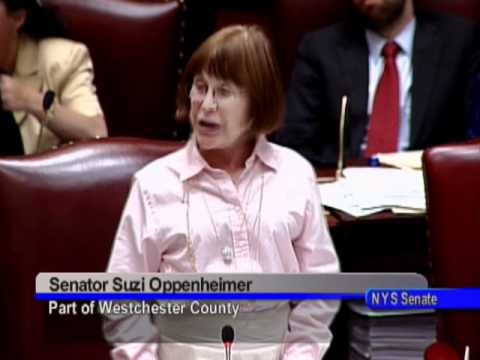
Smart Growth Act could fix state's infrastructure
By: Peter B. Fleischer
New York's budget crisis is forcing government at all levels to re-evaluate how it allocates increasingly rare public dollars. As officials seek to identify and eliminate wasteful and unnecessary spending, they will find some of the waste is hiding in plain sight.
Travel to downtown Buffalo or to many of the state's older suburbs and you'll find decaying sidewalks, half-empty shopping centers, vacant lots and abandoned homes. Then travel a few more miles into what was until recently open countryside, and you'll find big new homes sprouting from former farm fields. Meanwhile, the population of many counties and the state continues to decline.
This odd combination of declining population and accelerating sprawl is actually quite common across vast areas of New York. It's the Upstate Paradox. And for the past two years, as I've crisscrossed the state seeking ideas for making our communities more economically and environmentally sustainable, no land use challenge, among the many in New York, seems more problematic.
While some would argue that our budget woes are due to high taxes and excess regulation that drive businesses — and homeowners — out of state, inefficient land use and development are key causes, too.
Infrastructure is a big ticket item about which we can and must do something. The good news out of Albany is that state government is finally taking action to rein in wasteful spending on redundant, underutilized publicly funded projects we can no longer afford.
The state Legislature has approved the Smart Growth Public Infrastructure Policy Act (A8011/S5560), sponsored by Sens. Susan Oppenheimer, D-Westchester County, along with Velmanette Montgomery, D-Brooklyn, and Assemblyman Sam Hoyt, D-Buffalo. This prudent, common-sense legislation aligns the planning, grant-making and capital funding efforts of state agencies with projects or places where public infrastructure already exists.
The fact is we can no longer afford the current pattern of sprawl without growth. The population trends and fiscal reality of New York state require us to use scarce public funds to catalyze community economic revitalization within already developed areas — White Plains, for example. If state policy does not curtail upstate's sprawl-without-growth, higher property taxes and service cuts are inevitable.
According to a recent Cornell University study, the 49 upstate counties lost roughly 100,000 people between 1990 and 2010, while the 13 downstate counties gained more than 1.7 million residents. By 2035, upstate could lose an additional 670,000 residents, even as New York City metropolitan area gains an additional 1.4 million. Six western and central counties — Erie, Niagara, Monroe, Onondaga, Broome and Oneida — are projected to be 18 percent smaller.
Yet new development outside upstate cities and villages continues, seemingly unabated by the population patterns and economic realities, as too many local leaders and citizens try to solve development-caused problems through more development.
Suburban and exurban sprawl is not just an aesthetic blight of generic strip malls, cookie-cutter tract home developments, big box stores and roads so wide few dare to cross them. It is a blight on the taxpayers purse as well.
Larger homes built on larger lots farther away from town and city centers cost more in services than they create in tax revenue. They require extending increasingly costly roads, storm drains, sanitary sewers, water mains and other infrastructure that is expensive to build, operate and maintain. The costs are borne by the public — a shrinking and aging pool of taxpayers — even as the profits are pocketed by private home builders, real estate developers and mortgage lenders. It is a subsidy we can no longer afford.
The Smart Growth Public Infrastructure Policy Act recognizes that New York's population, home values or tax revenues cannot pay for endlessly expanding infrastructure to the horizon.
Smart Growth provides a blueprint for New York's future that focuses development and builds on our strengths — an educated work force, first-rate educational and medical institutions, existing infrastructure and housing stock, historic and livable town centers, natural resources, open space and working farms.
Future infrastructure investments must enhance the places where we have already spent public money to encourage New Yorkers to live and work. That is the essence of smart growth and smart budgets. We thank Sen. Oppenheimer and her colleagues in the state Legislature for their vision, and we urge Gov. David Paterson to sign the Smart Growth Act.
